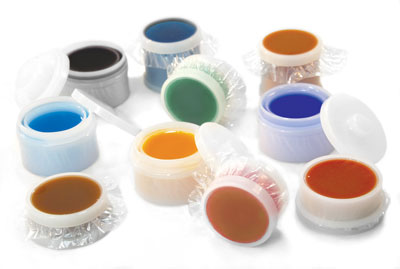- Home
- Products
Lab EquipmentMore ProductsAnalytical InstrumentMore ProductsConsumablesMore ProductsReagentMore ProductsCustomizedMore Products
- Industry Solutions
- Application Scheme
- Support & Services
- Customer Case
- About Us
- Contact Us

Since Friedmann and Burks developed the first commercial X-ray fluorescence spectrometer in 1948, X-rays have been applied to the field of spectral analysis. Due to low spectral interference, wide range of detection elements, wide range of content measurement(ppm-100 %), high precision, good repeatability, simple sample preparation, fast analysis speed, and non-destructive analysis methods, it has been recognized in many fields and gradually become an indispensable means for laboratories. The preparation of the sample is an important part of the XRF analysis, which is related to the accuracy of the analysis, and the pre-treatment of the sample needs great skill.
RUISHENBAO has a full set of XRF sample pre treatment equipment that can help researchers to handle various samples with ease and skills:
Due to the wide range of XRF application, there are many types of samples, but they can be divided into three categories according to the sample state: powder, block, and liquid samples.

1. Powder sample: Including various mineral products, cement and its raw materials, raw materials and by-products of metal smelting such as iron ore, coal and slag, as well as rock soil.
(1)PrepM-01 series vibratory disc mill is used to grind specimens below 200 mesh(particle size is 75 μm or less), and then the PrepP-01 automatic hydraulic pellet press is used to directly press the specimens into a tablet with the polyethylene cup or metal cup as the container, or polyethylene or boric as lining and bottom. If the sample adhesion is poor, an appropriate amount of binder can be used to press. Or the UHPS ultra-high pressure sample preparation system is employed to press directly into a tablet (We usually think that our press may not need such a high requirement for the sample

(2)Bead fusion method: The accurately weighed sample and the auxiliary solvent(mostly borate) are poured into the crucible at a certain ratio for homogenized mixture and then appropriate amount of demoulding agent is added. And then after the crucible is placed in the FHC-00 high frequency induction fusion machine or FSC-01 fully automatic fusion machine, start the heating process for full fusion in the auxiliary solvent and pout the melt sample into the mold at the same temperature. When the mold naturally cools down after the heating stops in 2 minutes, put the mold upside down with the crucible clamp, and the sample will be separated from the mold for testing.

2. Block samples: including ferrous metals, non-ferrous metals, electroplating plates, Silicon sheets, plastic products and rubber products, among which metal materials account for a large proportion:
(1)For block metal samples: First, the sample is cut or polished with the RBM-II metal grinding machine, and the processed sample can be directly analyzed by XRF;
(2)For non-metallic solid samples and non-block metal samples: First, the sample is pretreated and the sample is crushed into particles with size of about 1cm. Then the sample is ground and sifted into powder sample by the PrepM-01 series vibratory disc mill.

3. Liquid samples: Oil products, liquid samples, and solutions that are converted from solids by chemical means.
First, Maila film is laid flat on one end of the sample cup with a smaller inner diameter and seal this cup end with mala film. Then the sample cup with larger inner diameter is placed on the outside of the small sample cup, during which the evenness of Maila film must be guaranteed.Next, pour an appropriate amount of liquid into the sample cup for testing, and put the sample cover at the other end of the sample cup to measure the sample(Note: When measuring the liquid, the instrument must be changed to a helium system).
With experienced XRF analysis technicians and the full set of sample pretreatment equipment, RUISHENBAO provides different treatment methods for different samples to meet the various sample needs of scientific research and analysis. With the combined efforts with manufacturers and researchers, RUICHENBAO does the best to solve the problems of XRF sample pretreatment.